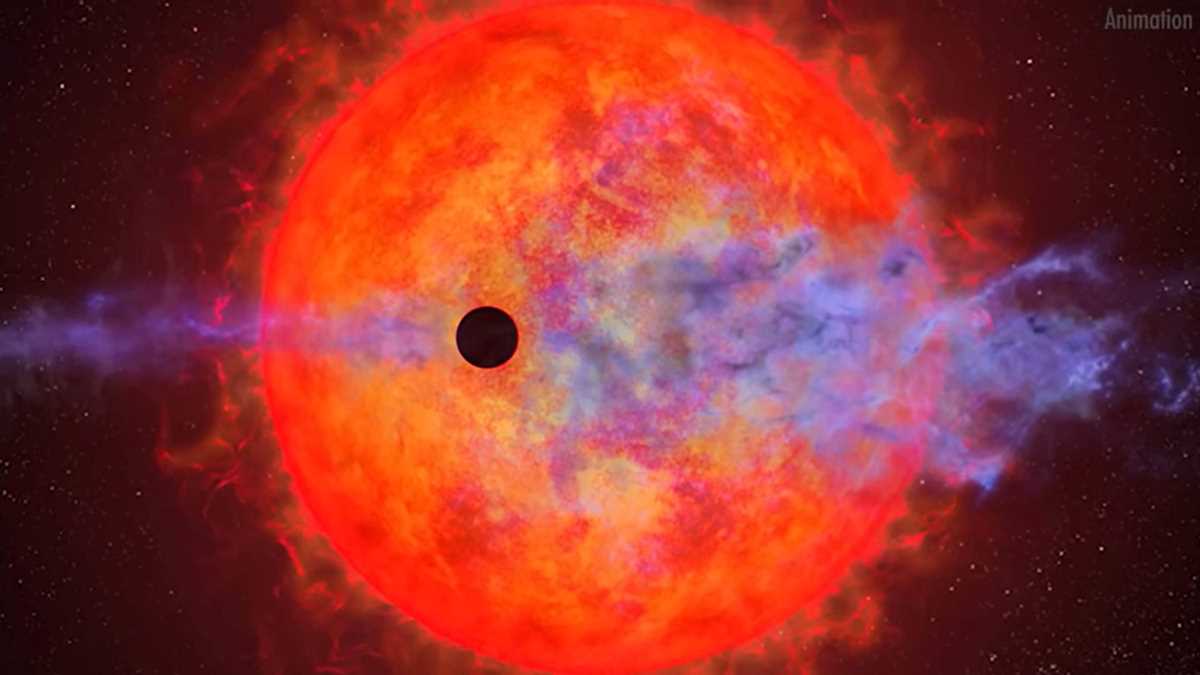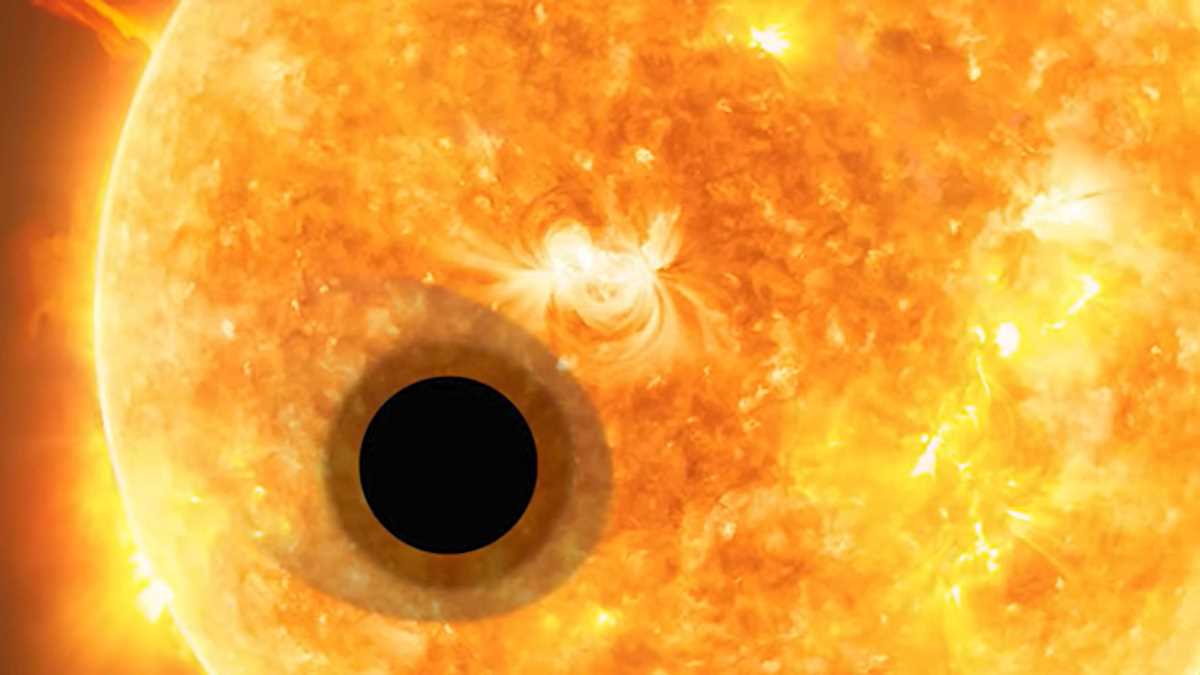How Hubble Caught a Star 'Inhaling' a Planet's Atmosphere
In a discovery straight out of a science fiction novel, NASA, and international scientists have observed a star—AU Mic—evaporating the atmosphere of its planet, AU Mic b, a “hot Neptune!” Located just 35 light-years away, this “next-door” cosmic system offers an unprecedented level of detail.

In a discovery that feels ripped from the pages of a science fiction novel, NASA, together with a team of international scientists, has recently observed a star literally evaporating the atmosphere of a planet. The findings were published in “The Astronomical Journal” and represent a major leap in our understanding of how planetary systems come to be. Utilizing the Hubble Space Telescope, the research team, led by Joel Sánchez Bermúdez at the Institute of Astronomy (IA) of the UNAM, honed in on a red dwarf star, AU Mic, and its intriguing planet, AU Mic b.
The formation of stars and planets is an intricate process of cosmic forces. Stars emerge from colossal clouds of gas and dust, with gravity pulling the denser regions of these clouds inward, while the internal gas pressure counteracts this gravitational collapse. Ultimately, a star represents a balance between these forces: gravitational pull and internal gas pressure.
When stars like our Sun are formed, they are usually surrounded by an accretion disk made of gas and dust. This accretion disk serves as the primordial soup for planet formation. Yet, the process remains enigmatic. “How we go from gas and dust, particles just a few microns in size, to rocky bodies the size of Earth or larger, remains an open question,” Bermúdez explains. The “evolutionary” chain of events is still unclear, especially how particles of dust agglutinate into larger bodies without being evaporated by the star's intense radiation.
What Makes AU Mic b So Special?
AU Mic b is no ordinary planet; it's what astronomers classify as a “hot Neptune,” a term used for planets roughly three times the size of Neptune that are exceptionally close to their parent star. In this case, AU Mic b orbits its star at a distance approximately 20 times closer than Earth is to the Sun, making a full orbit in just a few days. And here comes the blockbuster finding: AU Mic is evaporating the atmosphere of AU Mic b, primarily composed of hydrogen.
AU Mic and its planetary system are relatively young—at 23 million years, making them invaluable to researchers studying planetary formation. Located just 35 light-years away from Earth, this “next-door” system offers an unprecedented level of observational detail.
Red dwarfs make up around 70% of all stars in the Universe. These “cool” stars have surface temperatures ranging from 3,500 to 4,000 degrees Celsius, and they possess a long lifespan, measured in trillions of years. This abundance and longevity make red dwarfs pivotal to our understanding of planetary systems, both near and far.

What We've Learned and What's Next?
The discovery opens up avenues for understanding how planetary atmospheres can be stripped away, a process known as “hydrodynamic escape,” when exposed to sudden bursts of heat. Researchers have even coined this atmospheric jettisoning as a “hiccup,” emphasizing its abrupt nature.
In the past, missions like Kepler and TESS (Transiting Exoplanet Survey Satellite) have used transit techniques to identify exoplanets. This new finding leverages additional observational methods, such as ultraviolet spectroscopy, to provide even more profound insights into planetary formation and atmospheres. Bermúdez and his team have set the stage for more comprehensive studies that could, one day, help us fathom how Earth and other similar planets came to be.
While AU Mic and its hot Neptune may be exceptional in their characteristics, they offer a real-world laboratory for astrophysicists and astronomers to better understand the intricate processes governing planetary formation. As we peer further into the cosmos, the learnings gleaned from such research can have far-reaching implications, possibly unlocking the secrets of our own Solar System's history—and perhaps its future.
In a world continually grappling with its own existential challenges, these glimpses into the celestial mechanisms of life, death, and rebirth serve as humbling reminders of our place in the cosmos. After all, in about five billion years, our Sun, too, will metamorphose into a red giant, potentially stripping away Earth's atmosphere, just as AU Mic is doing to its planet now.
By expanding our celestial understanding, we're not just satisfying scientific curiosity; we're plumbing the depths of existential questions that have intrigued humanity for millennia. In this quest, every discovery is a monumental step forward.




